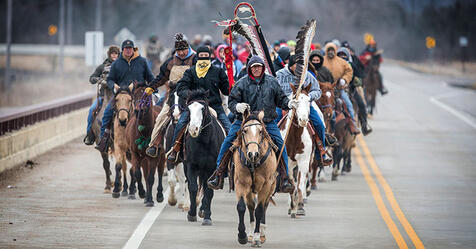
DAKOTA 38+2
Commemorative work to honor the 38 Freedom Fighters who were hung in the largest mass execution in the history of United States.
1862 US-Dakota Conflict
Prior to the conflict, the United States government forced the indigenous Sioux tribes from their land, dishonored their treaties, restricted their access to resources, and erased their way of life. In an act of desperation, Dakota warriors seized food from nearby settlements, which resulted in violence. As a consequence of this, 303 Dakota men were sentenced to hang in Mankato, Minnesota.
Hanging of 38 Dakota freedom fighters
The former president Abraham Lincoln pardoned all but 38 of these Freedom Fighters in what is now recognized as the largest mass execution in the history of the United States. According to Alexis Estes of the Lower Brule Sioux Tribe, 498 men who were suspected of the raids were held for trial. The unjust conditions of these hearings included language barriers, <5 minute trials, and lack of evidence. The hanging occurred the day after Christmas on December 26, 1862. Of the 38 who died that day, 2 were mistakenly hung. This is where the "Dakota 38+2" term originates from.
Post 1862 US-Dakota Conflict
After the conclusion of the mass execution, the indigenous peoples of the area were forced to vacate what little was left of their territory. This continued act of violence resulted in the loss of heritage, as well as the lives of many. The pardoned men were then sent to a prison camp in Iowa where many died from inadequate conditions. In order to encourage the remaining Dakota members to leave, bounties ranging from $25-75 were rewarded for the head of an indigenous man, woman, elder, or child. Furthermore, in the midst of this conflict, 1,600 indigenous members were sent to Fort Snelling's Concentration camp.
THE HANGING MONUMENT
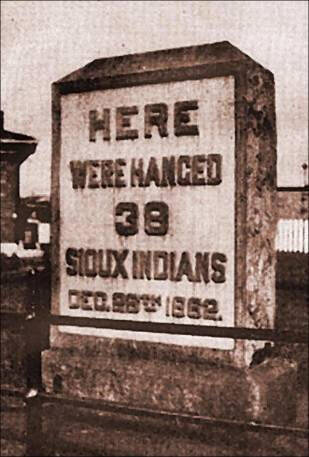
In 1912, a group of white citizens contested for the memorialization of the day 38 Dakota men were killed. To appease them, the city erected an 8,500 pound monument which proudly states the brutal events of 1862. This monument served as a painful reminder of a wounded place in the indigenous community. For members of the city of Mankato, this symbol of hatred simply was a source of embarrassment to the otherwise all-American town. After much discussion and several acts of vandalism, the statue was then removed in the 1970s and mysteriously vanished from public eye. Now, the monument is unable to be located and in its place stand Reconciliation Park.
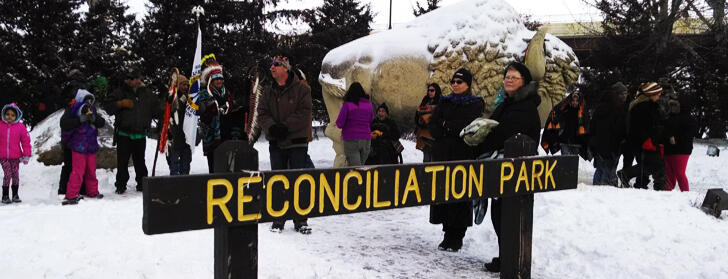
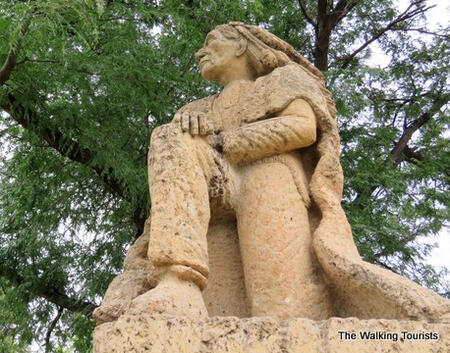
This wounded place has now been transformed into a place of healing and acceptance. In 1997 Reconciliation Park opened to the public as a site of commemoration. Two significant statues are located in this park: the Winter Warrior and Buffalo. The latter of the two represents the resilience of the Dakota people as well as their heritage. The park hosts several other symbolic sculptures including a scroll that lists the names of the men who were hung.
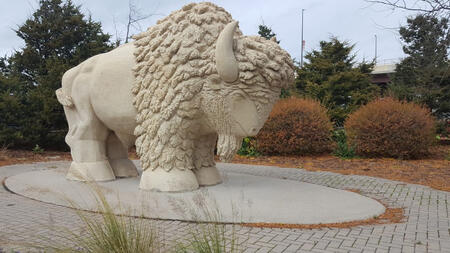
Dakota 38 Memorial
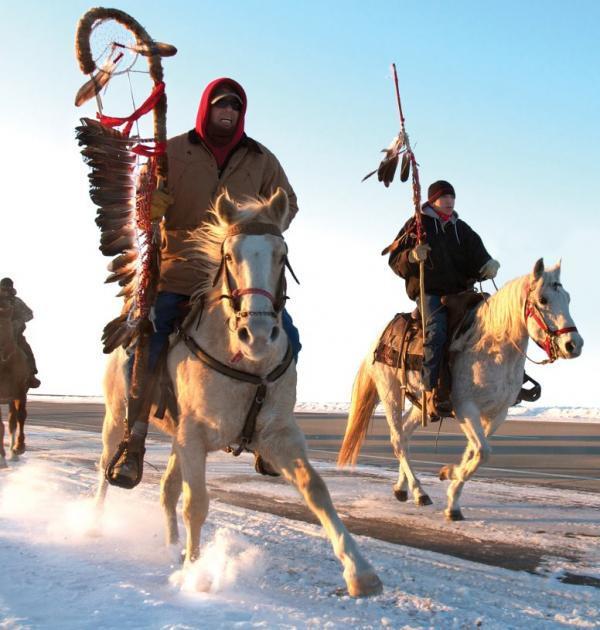
Every year since Jim Miller's dream in 2005, descendants of the Sioux community: the Lakota, Dakota, and Nakota tribes participate in an annual commemorative event that occurs in two parts. There is a 90 mile relay marathon that starts in Fort Snelling and finishes in Mankato. The longer journey begins in the Lower Brule Sioux Reservation in South Dakota and also concludes in Mankato. The purpose of this memorial is to foster reconciliation as well as healing from generational trauma. The free film below captures the experiences and meaning of this event in a poignant manner.
Proposed Memorial
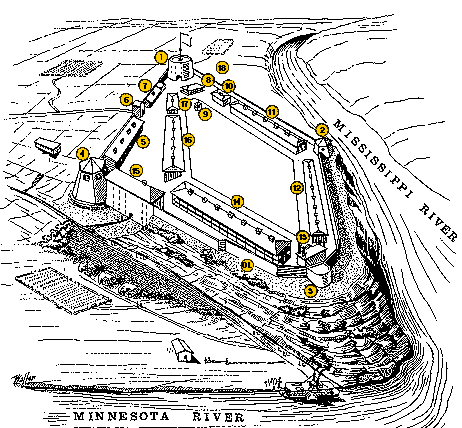
My commemorative monument would theoretically be located near the entrance of Historic Fort Snelling, Minnesota. The tours offered would explicitly describe the concentration camps that were hosted at this location and the guide would then offer additional resources to learn more about the current state of the Sioux Community. Donations would then be accepted on behalf of the remaining descendants, and 100% of the funds will be sowed into their communities as a form of reparations. This narrative would be informed by indigenous perspectives, and several meetings would take place to appropriately honor those who suffered at this camp. In addition to this tour, a permanent monument created by a Sioux member will also be located at this site. This statue will take form as the Wakinyan or Thunderbird. This symbol is greatly honored by the Lakota tribe for its guardianship of truth. This counter-hegemonic statue would mark a commitment in giving indigenous narratives the attention they deserve.
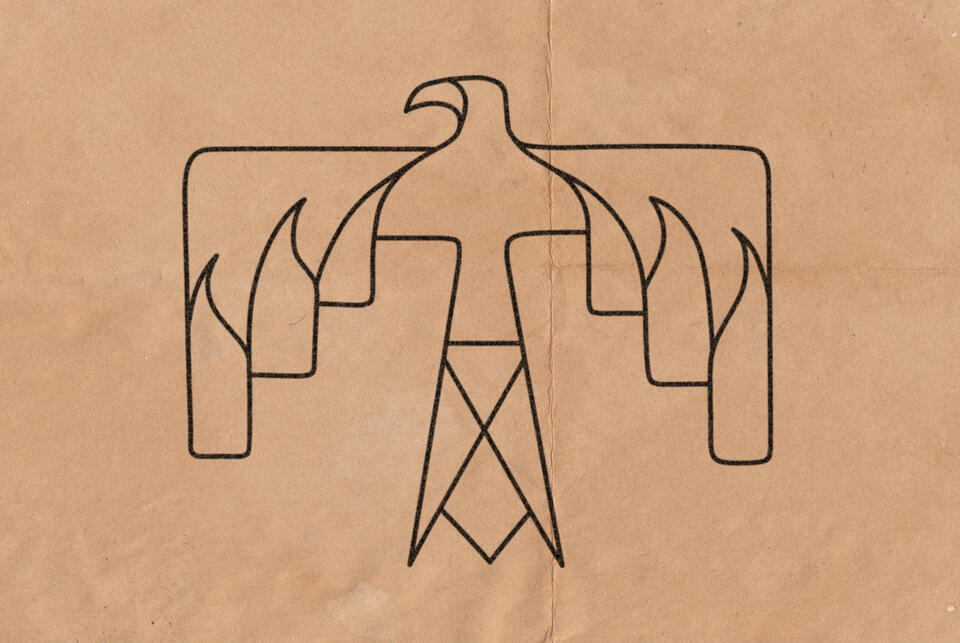
© Untitled. All rights reserved.
Sources
“DAKOTA 38.” Smooth Feather, www.smoothfeather.com/dakota38.
“Dakota Monuments.” Visit Mankato, Visit Mankato L.L.C.., 5 July 2018, www.visitgreatermankato.com/mankato/explore/history/dakota-monuments/.
Estes, Alexis. “The Untold Story: Living the Dakota 38 Memorial.” Native Hope, blog.nativehope.org/the-untold-story-living-the-dakota-38-memorial.
The Giant Mystery Birds: Thunderbird, Kongamoto, Rukh and more. psifly.com/cr2/index.php?topic=22041.10;imode.
Kenney, Dave. “Mankato, 1971: Minnesota’s Own Monument-Removal Experience.” Minnpost, 25 Aug. 2017, www.minnpost.com/community-voices/2017/08/mankato-1971-minnesotas-own-monument-removal-experience/.
Legg, John. “Mankato's Hanging Monument Excluded Indigenous Perspectives When It Was Erected and When It Was Removed.” History News Network, 26 July 2020, historynewsnetwork.org/article/176566.
Linehan, Dan. “Students Search for Missing Monument as Part of History Class.” Minnesota State University, Mankato, 15 May 2006, www.mnsu.edu/news/read/?id=old-1147703100.
Images
https://www.google.com/url?sa=i&url=https%3A%2F%2Fwww.stjo.org%2Fnative-american-culture%2Fhistory-heritage%2Fdakota-38%2F&psig=AOvVaw0R73GHYTjTP73zXddaLxzi&ust=1609897451305000&source=images&cd=vfe&ved=0CAIQjRxqFwoTCIjIt8DVg-4CFQAAAAAdAAAAABAD
https://www.google.com/url?sa=i&url=https%3A%2F%2Fwww.mprnews.org%2Fstory%2F2017%2F06%2F08%2Fmankato-hangings-an-uneasy-topic-for-minnesota-schools&psig=AOvVaw283ZUYeK31O4FEqCsGVPnw&ust=1609897534621000&source=images&cd=vfe&ved=0CAIQjRxqFwoTCOi4efVg-4CFQAAAAAdAAAAABAD
https://www.google.com/url?sa=i&url=http%3A%2F%2Fwikisota.pbworks.com%2FMetro-MN%253A-Fort-Snelling-Lesson-Plan&psig=AOvVaw21cFqlvKfSmcFGshIyT5KJ&ust=1609897575291000&source=images&cd=vfe&ved=0CAIQjRxqFwoTCOCAmILWg-4CFQAAAAAdAAAAABAD
https://www.google.com/url?sa=i&url=https%3A%2F%2Fwww.wilderutopia.com%2Finternational%2Fhumanity%2Fdakota-38-documentary-healing-journey-of-the-dakota-people%2F&psig=AOvVaw2uGyPS3rVbC4XRQmQD9J2X&ust=1609897619364000&source=images&cd=vfe&ved=0CAIQjRxqFwoTCLDgYWg-4CFQAAAAAdAAAAABAD
https://www.google.com/url?sa=i&url=https%3A%2F%2Fwww.mankatolife.com%2Ftodd-papabear-finney%2F&psig=AOvVaw2uGyPS3rVbC4XRQmQD9J2X&ust=1609897619364000&source=images&cd=vfe&ved=0CAIQjRxqFwoTCLDgY_Wg-4CFQAAAAAdAAAAABAI
https://www.google.com/url?sa=i&url=https%3A%2F%2Fwww.mnsu.edu%2Fnews%2Fread%2F%3Fid%3Dold-1147703100%26paper%3Dtopstories&psig=AOvVaw0WJosLgH0r0BZ2bfmvCniE&ust=1609897670727000&source=images&cd=vfe&ved=0CAIQjRxqFwoTCMDLyqvWg-4CFQAAAAAdAAAAABAD
https://www.google.com/url?sa=i&url=https%3A%2F%2Fthewalkingtourists.com%2Fmankatos-reconciliation-park-seeks-bridge-gap-native-americans-locals%2F&psig=AOvVaw2BY1fe1Rcy84ebVQMecBcP&ust=1609897746925000&source=images&cd=vfe&ved=0CAIQjRxqFwoTCOjq7s3Wg-4CFQAAAAAdAAAAABAD
https://www.google.com/url?sa=i&url=https%3A%2F%2Fwww.visitgreatermankato.com%2Fmankato%2Fexplore%2Fhistory%2Fdakota-monuments%2F&psig=AOvVaw2BY1fe1Rcy84ebVQMecBcP&ust=1609897746925000&source=images&cd=vfe&ved=0CAIQjRxqFwoTCOjq7s3Wg-4CFQAAAAAdAAAAABAJ
https://www.google.com/url?sa=i&url=https%3A%2F%2Fthoughtcatalog.com%2Fdaniella-urdinlaiz%2F2018%2F10%2Fnative-american-symbols%2F&psig=AOvVaw03bs6NlLG-LJwXp-1SmsIH&ust=1609897805129000&source=images&cd=vfe&ved=0CAIQjRxqFwoTCLCn7e7Wg-4CFQAAAAAdAAAAABAE
https://www.google.com/url?sa=i&url=https%3A%2F%2Fwww.mnhs.org%2Ffortsnelling%2Flearn%2Fus-dakota-war&psig=AOvVaw055qVhyGbKokK4GMvZpbh9&ust=1609897843278000&source=images&cd=vfe&ved=0CAIQjRxqFwoTCNjd8vzWg-4CFQAAAAAdAAAAABAD


